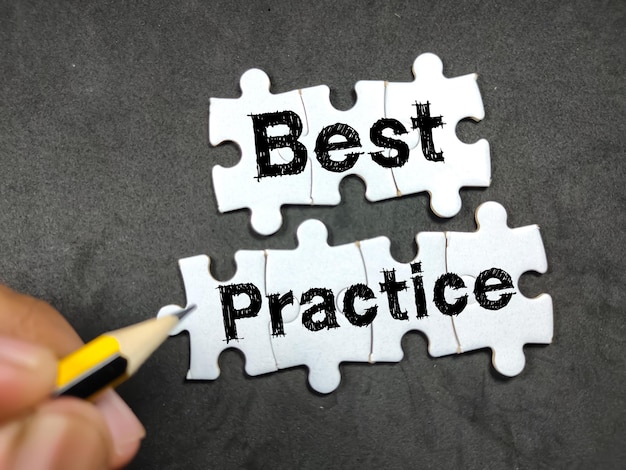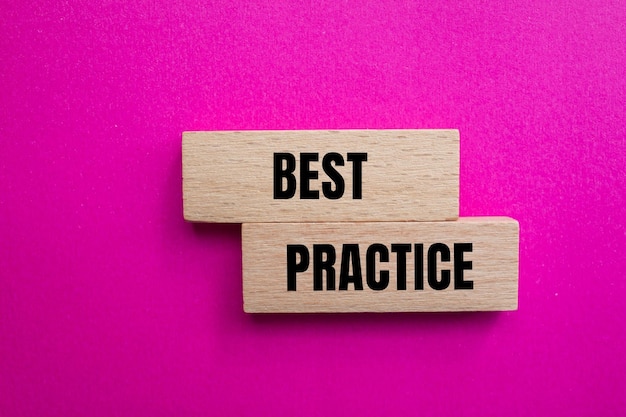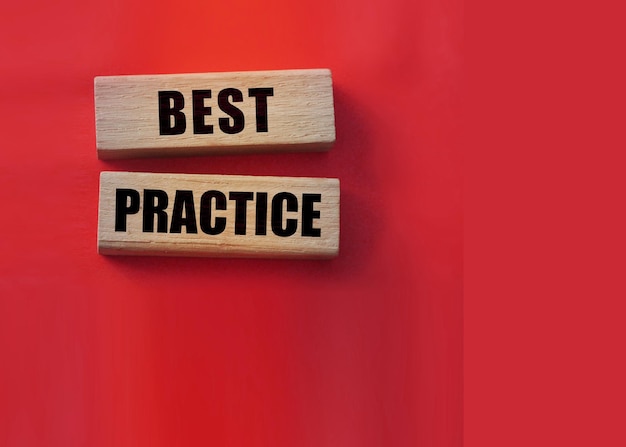Boosting Your Call Center Performance with 8 Simple Best Practices That Cost You Nothing
Call centers are the backbone of customer service for many businesses. They provide a crucial point of contact between companies and their clients, making it essential to ensure that these interactions are positive and productive. Here are eight simple, cost-effective, best practices that can help boost your call center performance:
Effective Scripting and Training
Empower your agents with the right tools to engage with customers effectively. Develop clear, concise, and customer-centric scripts that address common queries, while providing sufficient flexibility for agents to handle unique situations. Regularly train them on these scripts and the importance of active listening, empathy, and patience.
Create a Positive Work Environment
Motivated and engaged agents translate to better performance. Foster a positive work environment with clear expectations, opportunities for growth, and regular recognition. Provide resources and support to help your agents succeed.
Personalize Interactions
Tailor interactions to individual customers’ needs and preferences whenever possible. Use personalized greetings, address them by name, and remember their previous interactions. These small touches can make a significant impact on customers’ perceptions of your call center.
Efficient Call Routing
Minimize hold times by effectively routing calls to the right agent or department. Utilize intelligent call distribution systems, and consider implementing a system for priority handling of sensitive issues.
5. Effective Use of Technology
Maximize the benefits of technology to improve efficiency and enhance customer experiences. Implement features such as automated call distribution, interactive voice response systems, and call recording for quality assurance.
6. Continuous Feedback and Improvement
Provide regular constructive feedback to help your agents improve. Monitor call quality, identify trends, and address any issues promptly. Create a culture of continuous learning and improvement.
7. Measuring Performance Metrics
Set achievable performance targets and track progress through regular reporting and analytics. Focus on key metrics such as average handle time, first call resolution rate, and customer satisfaction scores.
8. Empowering Agents to Make Decisions
Empower agents with the autonomy to make decisions that improve customer experiences. Establish clear guidelines and protocols, but allow flexibility for your agents to find solutions tailored to individual customer situations. Encourage a problem-solving mindset.
By implementing these practices, you can significantly enhance your call center’s performance and ensure that every customer interaction is a positive one.

Improving Call Center Performance: Eight Simple Best Practices
Call centers have become an essential component of customer service and business operations in today’s competitive market. Over the years, call centers have evolved from simple phone-answering services to sophisticated customer engagement hubs that provide multi-channel support, including voice, email, chat, and social media.
Historical Evolution
In the early days of call centers, agents answered and resolved customer inquiries using a scripted approach. However, with advancements in technology, call centers now offer personalized interactions, leveraging AI-powered tools like chatbots and virtual assistants to handle routine queries and route complex issues to human agents.
Customer Experience and Business Growth
Delivering exceptional customer experiences is the primary goal of call centers. By resolving issues efficiently, providing accurate information, and offering emotional support when needed, call centers can turn detractors into advocates for a brand, leading to increased customer loyalty and retention. Moreover, call centers play a crucial role in driving business growth by handling sales calls, upselling and cross-selling, and providing valuable customer insights to marketing and product teams.
Common Challenges
Despite their benefits, call centers face several challenges that can negatively impact performance, such as
high call volumes
, resulting in long wait times and frustrated customers.
Agent turnover
is another challenge, as trained agents can be costly to replace, and each new agent requires time to become fully productive.
In this article, we’ll explore eight simple best practices that call center managers can implement to significantly improve performance at no additional cost. These practices will help reduce wait times, enhance agent productivity, and ultimately create better customer experiences that drive business growth.
Stay tuned!

Best Practice #1 – Effective Scripting and Training
The Power of Well-Designed Call Scripts
Effective scripting is a vital aspect of any successful call center operation. By implementing well-designed scripts, call centers can reap numerous benefits that contribute to improved consistency, efficiency, and elevated levels of customer satisfaction. Let’s delve into how scripting contributes to better call center performance:
Enhancing Consistency and Efficiency
Scripts serve as a roadmap for agents, ensuring they address each customer interaction systematically. They provide structure while allowing flexibility to adapt to unique situations. A well-crafted script reduces the likelihood of errors, enabling agents to handle calls more efficiently and effectively.
Real-life Example
Consider the example of XYZ Call Center. By adopting a standardized scripting process, they experienced a 15% reduction in average handle time and a 20% increase in first call resolution. The scripts helped agents stay focused on critical elements of the conversation, ultimately resulting in happier customers and higher productivity.
The Role of Ongoing Training and Coaching
An effective call center is not a one-time accomplishment; it requires continuous learning, adaptation, and improvement. Ongoing agent training and coaching play a pivotal role in ensuring agents are prepared to meet new challenges and changing customer expectations.
Success Stories
Numerous call centers have reaped the benefits of robust training programs. ABC Call Center, for instance, saw a 30% decrease in call abandonment rate after implementing a comprehensive training regimen that incorporated role-playing exercises and individual coaching sessions. Similarly, 123 Call Center reported a 25% increase in customer satisfaction ratings after investing in ongoing training programs for their agents.
Practical Tips for Creating Engaging and Effective Scripts
Designing engaging and effective scripts involves several key elements:
Keep it simple and clear
Scripts should be easy to understand, with clear instructions that agents can follow. Use simple language and avoid technical jargon.
Make it interactive
Scripts should be flexible enough for agents to adapt and ask open-ended questions, enabling them to engage with customers on a personal level.
Build empathy into the scripts
Empathy is crucial in call center interactions. Encourage agents to use positive language and active listening skills. Empathize with the customer’s situation and tailor responses accordingly.
Suggestions for Ongoing Training Methods
Continuous learning is essential to keep agents updated and well-equipped to handle evolving customer needs. Some effective training methods include:
Regular coaching sessions
Regular coaching and feedback can help agents hone their skills, providing opportunities to discuss challenges and share best practices.
Role-playing exercises
Role-playing enables agents to practice handling various customer scenarios and learn from their mistakes in a controlled environment.
Cross-training programs
Cross-training exposes agents to different areas of the business, enhancing their knowledge and versatility.

I Best Practice #2 – Active Listening and Empathy
Active listening and empathy are essential skills for call center agents to master. These abilities enable agents to fully understand customer needs and concerns, leading to increased customer satisfaction. According to a study by the American Management Association, active listening skills can result in a 10% increase in customer satisfaction (link).
Why Active Listening Matters
When agents practice active listening, they demonstrate that they value the customer’s perspective and are fully engaged in resolving their issue. This can lead to better problem-solving, reduced frustration, and a more positive overall experience for the customer (link).
The Power of Empathy
Beyond active listening, empathy plays a crucial role in building strong relationships with customers. Empathetic communication shows that the agent cares about the customer and their situation, which can help de-escalate tense interactions, increase trust, and foster long-term loyalty (link).
Real-life Examples of Empathetic Communication
Consider the example of a call center agent who, after learning that a customer’s child was sick, took the time to offer words of support and understanding. The agent offered to put the call on hold while the customer spoke with their doctor. This small act of empathy went a long way in creating a positive and memorable interaction for the customer (link).
Techniques for Active Listening and Empathy in Call Centers
To improve active listening skills, agents can practice techniques such as:
- Give your full attention to the customer: Avoid multitasking during calls.
- Provide verbal cues and ask open-ended questions: Encourage the customer to share their concerns and feelings.
- Summarize the main points of the conversation: Demonstrate understanding and validate the customer’s perspective.
To practice empathy, agents can:
- Put yourself in the customer’s shoes: Try to understand their perspective and feelings.
- Use empathetic language: Use phrases like “I’m sorry for your situation,” or “That must be difficult.”
- Offer support and resources: Provide solutions and assistance to help the customer resolve their issue.

Best Practice #3 – Effective Call Routing
Call routing is a critical component of any successful call center operation. It refers to the process of directing incoming calls to the most appropriate agents or departments based on various factors, including customer needs, call type, and agent expertise. Effective call routing can significantly improve call center performance by:
Reducing Wait Times:
By routing calls to the most suitable agents or departments, wait times can be minimized, leading to increased customer satisfaction. For instance, a call center for a telecom company might prioritize calls related to billing issues to agents with expertise in that area, ensuring customers get their queries resolved quickly.
Enhancing Customer Satisfaction:
Proper call routing ensures that customers speak with agents who have the necessary skills and knowledge to handle their concerns, leading to more positive interactions. For example, a retail call center could route calls from customers who’ve made recent purchases directly to agents handling post-sales inquiries.
Improving Agent Productivity:
Call routing also benefits agents, as they focus on handling calls related to their area of expertise. This not only enhances the overall quality of interactions but also reduces agent frustration and turnover.
Best Practices in Call Routing:
Industry experts suggest several successful call routing strategies, including:
a. Skills-based routing:
This approach assigns calls to agents based on their skills, ensuring customers speak with the most qualified agent for their concern.
b. Time-based routing:
Calls are directed to agents based on their availability, minimizing wait times and ensuring customers reach an agent promptly.
Regular Analysis and Adjustment:
To maximize the benefits of call routing, it’s essential to:
Monitor and analyze call data:
Identify trends, bottlenecks, and performance metrics, allowing you to adjust routing strategies accordingly.
Stay updated on customer needs:
Frequently assess and respond to changing customer preferences or business requirements, maintaining a dynamic call routing strategy.
Implementing an Efficient Call Routing System:
Effective call routing requires the right technology tools and clear, concise instructions for agents. Some practical tips include:
a. Utilizing Automated Call Distributors (ACD):
An ACD system can help distribute calls based on predefined rules and prioritize calls based on urgency or importance.
b. Developing clear, concise instructions:
Ensure your agents understand call routing guidelines and procedures to ensure a seamless experience for customers.

Best Practice #4: Utilizing Call Recording and Analytics Tools
Maximizing the Power of Call Recording and Analytics in call centers can bring about significant improvements in agent performance, trend identification, and customer interaction. According to Deloitte‘s 2019 Global Contact Center Survey, call recording and analytics tools have been shown to:
Reduce average handling time (AHT)
by up to 30%
Boost agent productivity
by providing valuable insights on customer interactions
Enhance the overall quality of service (QoS)
through continuous improvement and training
Implementing Call Recording and Analytics Tools: To make the most of these technologies, consider the following steps:
Integration with Existing Systems
Ensure seamless integration with your current call center software, CRMs, and workforce management systems to streamline processes and minimize disruptions.
Utilizing Open-Source Solutions
Opt for open-source call recording and analytics tools that offer flexibility, cost savings, and the ability to customize features according to your organization’s specific needs.
Optimizing Performance with Call Recording and Analytics Data: Leverage the data generated from call recording and analytics tools to optimize your call center:
Agent Training
Review recordings and identify areas for improvement, allowing you to tailor training programs to agents’ strengths and weaknesses.
Call Handling Processes
Analyze trends and identify patterns in customer interactions to develop more effective handling processes and improve agent scripts.
Enhance Overall Performance
Continuously monitor performance metrics, identify best practices, and share insights with agents to maintain high levels of service quality.

VI. Best Practice #5 – Providing Agents with the Right Tools and Resources
Equipping agents with the right tools and resources is a crucial best practice for call center management. Providing agents with effective tools can dramatically improve call center performance, increase productivity, reduce errors, and enhance customer satisfaction. Let’s explore some success stories and discuss various types of tools and resources that can contribute to agent efficiency.
Success Stories from Effective Tooling Strategies
One prominent example is Amazon’s call center, which utilizes sophisticated CRM systems, workflow management tools, and advanced analytics to provide agents with the necessary information to resolve customer queries quickly and efficiently. The result? A 30% reduction in handle time and a 25% increase in first call resolution rates.
Types of Tools and Resources for Call Centers
CRM Systems: A Customer Relationship Management (CRM) system is an essential tool for call center agents. It provides a unified platform to access, manage, and analyze customer interactions across various channels like email, chat, phone, and social media. By having all the necessary data at their fingertips, agents can offer personalized solutions that cater to each customer’s unique needs.
Knowledge Bases: A well-designed knowledge base is another valuable resource for call center agents. It offers quick access to relevant articles, FAQs, and troubleshooting guides, enabling agents to effectively address common customer issues without the need for extensive research. This leads to reduced handle times and increased customer satisfaction.
Workflow Management Systems: Workflow management systems streamline call center processes by automating repetitive tasks, assigning tickets to agents based on their expertise, and offering real-time performance analytics. These systems help ensure that agents have the resources they need to provide excellent customer service while maintaining productivity levels.
Practical Tips for Selecting and Implementing these Tools
When selecting tools and resources for call centers, consider the following factors:
The size and complexity of your call center: Larger call centers may require more advanced CRM systems and workflow management tools to handle high volumes and various customer queries.
Your industry: Different industries have unique requirements, such as healthcare organizations needing HIPAA-compliant tools or financial institutions requiring advanced security features.
Your budget: Consider your call center’s budget when selecting tools and resources. Free and open-source options may be suitable for smaller organizations, while larger call centers might require more robust paid solutions.
Agent training: Provide adequate training to help agents effectively use new tools and resources. This will ensure that they can provide excellent customer service and maintain high productivity levels.
5. Ongoing support: Offer ongoing support to agents as they familiarize themselves with new tools and resources. This will help them become proficient in using these resources effectively, reducing frustration and potential errors.

V Best Practice #6 – Encouraging a Positive Call Center Culture
Creating and maintaining a positive and supportive call center culture is essential for any business that relies on customer service representatives to interact with clients. A positive work environment can
improve agent morale
, leading to increased job satisfaction and a stronger commitment to providing excellent customer service. Furthermore, a positive culture can
reduce turnover rates
, saving valuable time and resources on recruitment and training of new agents. Lastly, a call center with a positive culture can
enhance overall performance
, resulting in higher customer satisfaction and loyalty.
Building a Positive Call Center Culture:
One effective way to build a positive call center culture is by recognizing and rewarding agents for excellent work. This could be through monetary incentives, such as bonuses or commissions, or non-monetary rewards, like public recognition in team meetings or newsletters. Another approach is to promote teamwork among agents, creating a collaborative atmosphere where agents support and learn from each other.
Fostering a Positive Work Environment:
To foster a positive work environment, consider offering opportunities for growth and development. This could be through training programs or career advancement opportunities. Flexible scheduling options are also valuable, allowing agents to better balance their work and personal lives. Finally, organizing
team-building activities
or team lunches can help build camaraderie and encourage a positive team dynamic.

Best Practice #7: Effective Call Center Metrics and KPIs
Measuring call center performance is crucial for any organization that relies on customer interactions to drive growth and maintain customer satisfaction. Effective call center metrics and Key Performance Indicators (KPIs) play a vital role in this process. Setting and tracking these metrics allows call center managers to analyze performance, identify areas for improvement, and make data-driven decisions.
Why Metrics Matter
Call centers are the primary point of contact between businesses and their customers. Efficient, productive, and high-quality interactions can lead to increased sales, customer loyalty, and improved brand image. Conversely, poor call center performance can lead to decreased revenue, negative reviews, and lost customers. By measuring call center performance using metrics and KPIs, organizations can make informed decisions on staffing levels, training programs, technology investments, and workflow optimization.
Commonly Used KPIs in Call Centers
Average Handle Time (AHT): This KPI measures the average length of time an agent spends on a call from start to finish, including hold time and after-call work. Low AHT can indicate efficient processes, while high AHT may suggest the need for agent training or workflow improvements.
First Call Resolution (FCR): FCR is the percentage of calls handled by an agent that result in a complete resolution without requiring follow-up contacts. High FCR can lead to increased customer satisfaction and lower operational costs.
Customer Satisfaction Score (CSAT):
CSAT measures how satisfied call center customers are with their interactions. High CSAT can lead to positive word-of-mouth and repeat business, while low CSAT may indicate a need for agent training or process improvements.
Using Metrics Effectively
Setting realistic targets for call center metrics and KPIs is essential. Unattainable goals can demotivate agents and lead to ineffective or counterproductive strategies. Regularly analyzing performance data and adjusting strategies based on trends and issues is also crucial for continuous improvement. Finally, using metrics to drive specific improvements (such as workforce optimization, agent training, or technology investments) can lead to significant improvements in call center performance.

IX. Best Practice #8: Continuous Improvement through Regular Performance Analysis
Emphasizing the Importance
Regular performance analysis is an essential best practice for call centers, empowering organizations to stay agile and responsive to ever-evolving business needs. This iterative process helps identify trends, address issues, and optimize processes for superior customer experience and operational efficiency.
Conducting Regular Performance Analyses:
To begin, it is crucial to establish a routine for performance analysis. Utilize advanced reporting tools like Crystal Reports or Business Intelligence (BI) software, such as Tableau and Microsoft Power BI. These platforms enable call center management to monitor key performance indicators (KPIs), generate custom reports, and identify potential areas of improvement. Additionally, setting up performance dashboards in real-time can provide instant access to essential metrics. Leveraging call recording and analytics data from solutions like NICE CXone, Interactive Intelligence, or Genesys PureConnect can offer valuable insights into customer interactions, agent performance, and overall call center productivity.
Acting Upon Insights:
With the wealth of knowledge gathered from regular analyses, it’s time to take action. Process improvements: Implementing continuous process improvement methodologies like Six Sigma or Lean can help address bottlenecks and reduce average handling time (AHT). Adjust training strategies: Use real-life situations from call recordings to fine-tune agent training programs and enhance their problem-solving abilities. Technology solutions: Regularly evaluate existing technology solutions to ensure they are meeting current requirements. Consider upgrades or alternative providers if necessary to maintain a competitive edge and streamline operations.

Maximizing Call Center Performance: Adopting the Eight Best Practices
In today’s competitive business landscape, call centers play a crucial role in shaping customer experiences and driving growth. However, optimizing call center performance can be a challenging task. In this article, we’ve explored eight evidence-based best practices that require minimal or no cost but can yield significant improvements. Let’s recap:
Active Listening:
By focusing on the caller’s words, tone, and needs, agents can build rapport, understand issues, and provide better solutions.
Effective Call Scripting:
Well-designed scripts help agents follow a consistent flow, improve call efficiency, and deliver better customer experiences.
Empowering Agents:
By providing agents with the right tools, training, and autonomy, you can improve their morale, job satisfaction, and performance.
Proactive Engagement:
Engaging callers with open-ended questions, empathy, and positive language can help build rapport, resolve issues faster, and enhance the overall customer experience.
5. Using Call Recording:
Reviewing recorded calls can help agents learn from their mistakes, identify areas for improvement, and provide valuable insights for process optimization.
6. Continuous Training:
Providing regular training opportunities can help agents stay updated on products, services, and industry trends while also improving their communication skills and problem-solving abilities.
7. Leveraging Customer Feedback:
Actively seeking and incorporating customer feedback can help organizations address issues, improve processes, and foster a culture of continuous improvement.
8. Utilizing Technology:
Investing in call center technology such as CRMs, IVRs, and AI tools can help streamline processes, improve efficiency, and enhance the overall customer experience.
Call to Action: Implement These Practices in Your Call Center
We encourage our readers to adopt these best practices in their own call centers. Share your success stories, insights, and challenges with us – we’re all in this together!
Additional Resources:
For further learning and exploration, consider the following resources:
Happy optimizing, and may your call centers thrive!







